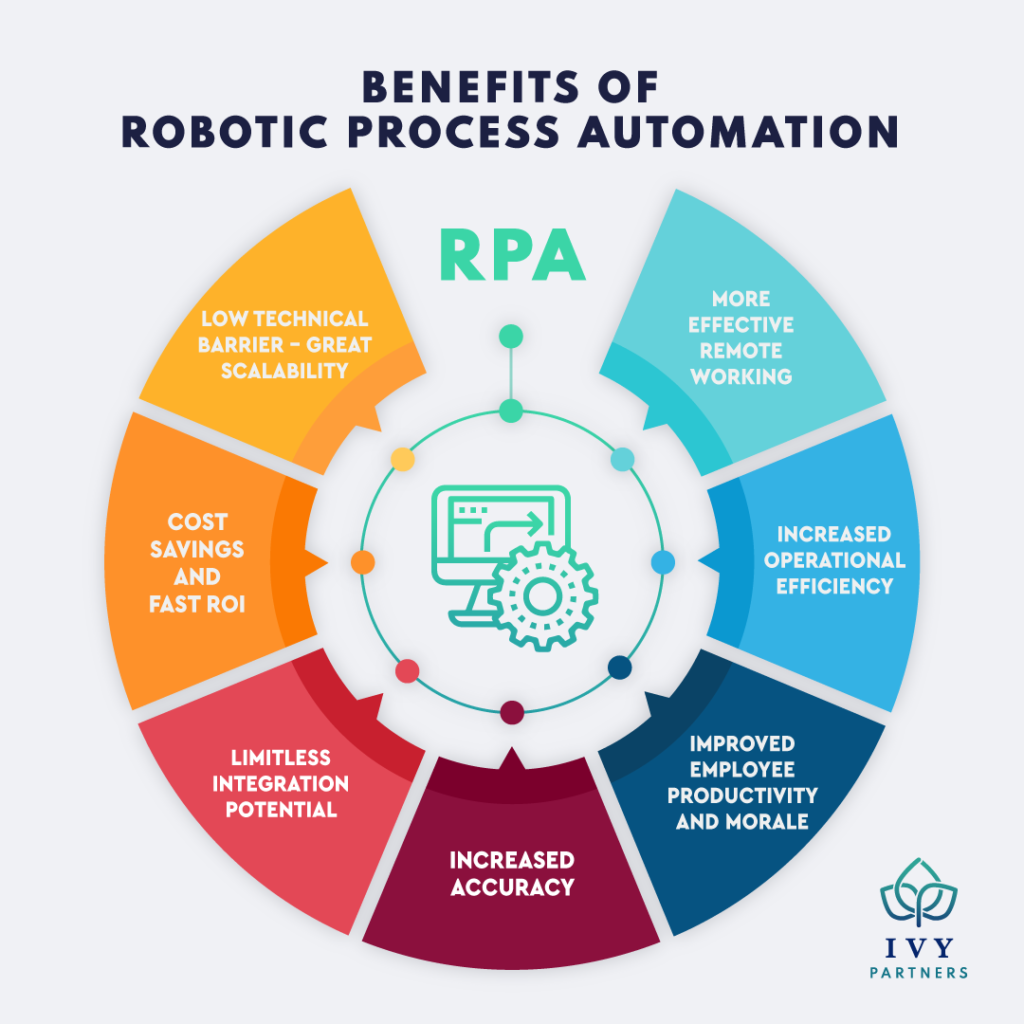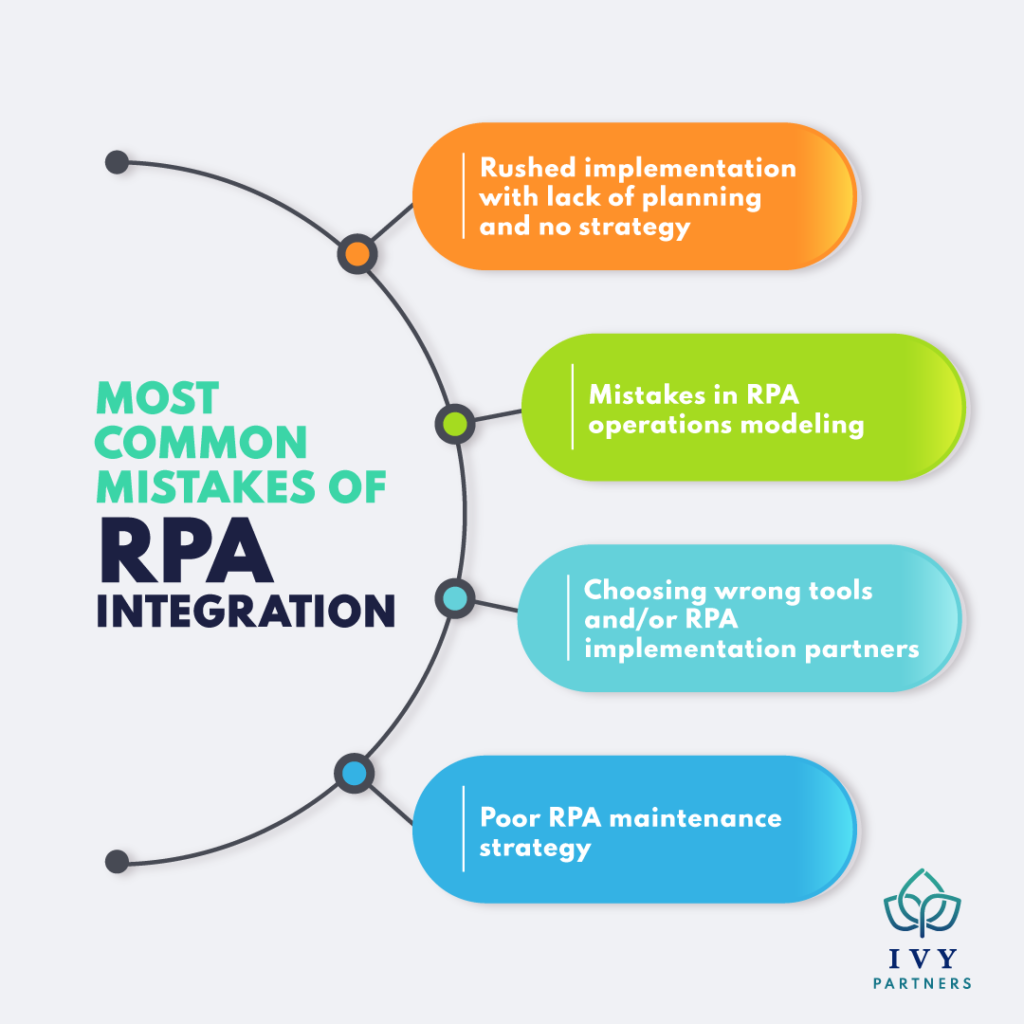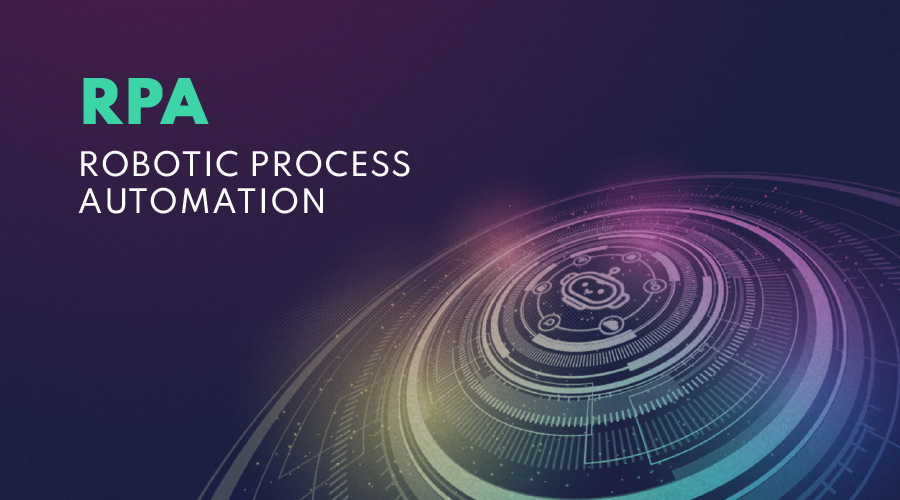Today’s business operations require employees to perform many relatively simple repetitive tasks that take a lot of time and consume enormous shares of company resources. However, thanks to the technologies of the new Industry 4.0 era, a large percentage of these tasks can be automated with great benefits for the business.
Even though innovative technologies such as AI and Big Data undoubtedly have incredible business automation potential across various industries and applications, other automation tools and solutions can be implemented with measurable business results today, relatively modest resources and without allocating an enormous budget for such a project.
One specific technology that is often overshadowed by other tech trends is robotic process automation (RPA).
What is Robotic Process Automation (RPA)?
Robotic process automation (RPA) is a type of a larger group of technologies commonly referred to as business process automation (BPA) solutions. In RPA, the automation of various processes is achieved by creating and implementing so-called software robots or simply “bots” powered with AI and other sophisticated algorithms. RPA can be configured to execute various processes within the software layer of the system, both internally (in the organization’s computer network) and externally (interacting with third-party systems).
Robotic process automation solutions have many applications within organizations across industries, with new ways to continuously utilize this technology. This technology can be used to automate a multitude of repeatable and mundane rules-based business processes, allowing organizations to boost the efficiency of all operations. RPA solutions can also be highly beneficial for individual employees as the automation of time-consuming tasks saves their time and energy, which can be used to work on more creative and high-value assignments.
RPA industry
Even though it’s probably fair to call RPA an emerging technology, it has been well-established over the past few years. However, as RPA solutions become more sophisticated and pioneering organizations publish new reports documenting the successful implementation of this technology, the RPA market is increasingly gaining momentum.
According to a recent study, the global robotic process automation market is projected to grow from $2.7 bln in 2020 to $18.3 bln by 2027, exhibiting an impressive CAGR of 31.07%. Similar to other innovative business technologies, the RPA market growth has been additionally fueled by the COVID-19 pandemic crisis, which led to higher demand for optimization and automation solutions from organizations.
Business benefits of RPA
The rapidly growing adoption of RPA solutions isn’t surprising. This technology is relatively easy to implement. It can be used to automate a wide array of activities in the digital space typically performed by employees, allowing them to reallocate resources for greater agility and productivity and helping businesses minimize costs.
It is safe to say that RPA solutions, when implemented correctly, can provide a large number of benefits across various levels of business operations. This is why so many organizations today choose to prioritize robotic process automation over other types of digital transformation and modernization projects.
Let’s take a close look at some of the most crucial and well-documented advantages of using the RPA technology and its strengths from a business perspective.

● Great scalability
Organizations pursuing growth and quick market share expansion always require efficient and easily implemented solutions that can be scaled with minimum costs.
Great scalability potential is one of the most critical strengths of RPA. As implementing software robots doesn’t require excessively complex software solutions or deep network integrations, process automation that was successfully implemented in one department can be scaled for the whole organization. The scaling comes at minimal extra costs and can be implemented quickly and with minimum effort.
According to David Schatsky, managing director at global professional services firm Deloitte, the company managed to automate its claims process by deploying 85 bots set to emulate a total of 13 processes across the organization. Handling over 1.5 million requests per year, these software robots perform the amount of workload equal to 200 full-time human employees. This allows to free time for employees and let them focus on higher value added activities that will result in improved business metrics.
● Cost savings and fast ROI
RPA can drive business metrics by reducing human labor costs and operational expenses. Implementing software robots allows businesses to automate countless work processes that were done manually, saving them hiring expenses. In Deloitte’s case, the implementation of 85 bots had cost them less than 30% of what they would have to spend on recruiting new employees needed to handle this workload. It is important to note that RPA should be part of an “integrated workforce” in which bots work alongside people, taking on relatively simple activities.
● Limitless integration potential and a growing number of applications
More than 80% of routine rule-based work processes within IT networks can be automated with RPA, including scanning the Web for specific data and its extraction, automatic filling and sending of forms, organizing and moving files and folders within the organization’s IT system, logging into apps and services, etc. And this list keeps growing continuously as RPA technologies get new applications for organizations across industries.
● Enhanced accuracy
According to a report by Forrester Consulting, based on a survey of 100 decision business makers about their experience of RPA integration, 57% of respondents said that RPA allowed them to considerably reduce manual errors. The elimination of manual errors and delays in processes that are automatable with RPA improves the accuracy and efficiency of business operations and increases the speed of all interactions.
● Improved employee satisfaction
66% of organizations surveyed by Forrester said that RPA integration allowed them to restructure existing work, enabling employees to focus on more meaningful, strategic tasks and freeing them to do other tasks requiring human strengths such as emotional intelligence, reasoning, judgment, and interaction with the customer. In addition to increased productivity, employees are happier and more satisfied with their jobs. This also brings the opportunities to upskill employees and train your valuable employees to embrace the change, learn new skills and job roles.
● More effective remote work and business operations
As a final point that we would like to emphasize, one of the reasons the demand for RPA has increased in the last couple of years is a massive transition to remote work across the globe triggered by the COVID-19 crisis. Utilizing software robots can be extremely useful for organizations looking to streamline their remote operations. RPA tools help employees quickly access enterprise services and tools and simplify their interaction with each other.
RPA implementation methods
As mentioned above, the simplicity of implementation is a significant benefit of RPA solutions compared to other Industry 4.0 automation technologies. Software robots are integrated into existing enterprise IT systems and applications, mimicking human interactions. They can access internal or external services and data using screen scraping and customized action scripts.
There are two general methods of implementing RPA on top of the existing IT system.
1. Frontend integration
Screen scraping technologies enable the frontend integration of robotic process automation solutions. With frontend integration, software robots are connected to desktop applications directly, interacting with user interfaces the way human users do. The combination of modern-day computer vision and screen capture technologies allows RPA solutions to capture various kinds of information on the screen, identify different user interface elements, and interact appropriately. As a result, frontend integration is the most straightforward way of implementing an RPA solution.
2. Backend integration
Backend integration is based on adding the RPA solution as a program code to the organization’s internal system. In this method, software robots access processes and applications through the software layer, communicating with various system components via APIs instead of interacting with their user interfaces. Even though backend integration is relatively more complex to implement and requires technical expertise, this method has several advantages over frontend integration. It is typically necessary to achieve the best results. Specifically, RPA integration on the software level makes it possible to augment bot automations with other technologies such as third-party AI and ML (machine learning) capabilities. Additionally, backend-integrated RPA solutions are much easier to scale and/or repurpose for different applications.
RPA vendors
According to Gartner’s 2021 research of the RPA market, the 10 most prominent RPA vendors account for more than 80% of the market (up from 70% in 2020), and the three most prominent vendors account for 52%. Among those top players are UiPath, Automation Anywhere, Microsoft and Blue Prism.

Most common mistakes of RPA integration
Talking about the benefits of robotic process automation and business advantages of this technology, we may create a bit of a one-sided impression. Even though RPA has tremendous business-enhancement potential in its various applications, we should also acknowledge that the results of RPA integration can vary significantly from company to company, depending on how they approach this process.
Even though RPA solutions are relatively easy to implement compared to other more complex automation systems, the development and deployment of RPA projects still come with some risks and challenges.
Here are some of the most common mistakes organizations tend to make when implementing or trying to implement RPA projects.

1. Rushed implementation with lack of planning and no strategy.
Naturally, the root of most failures lies in misguided or careless approach at initial stages, be it lack of planning and research, no strategy, or rushing the implementation with unrealistic goals. Such an approach often leads to problems of varying degrees, from occasional errors and glitches in the system to complete failures when the solution doesn’t deliver substantial value or negatively affects business operations.
2. Mistakes in RPA operations modeling.
Robotic process automation needs to interact with various elements of the IT system to emulate the work processes. Each automation must be carefully designed and tested to ensure it will function as intended and won’t produce any accidental errors and system issues. All this information should be documented in an operating model. Implementing RPA without an operating model is another common reason an automation project may fail.
3. Choosing wrong tools and/or RPA implementation partners.
When implementing this technology, business decision-makers must choose specific tools, be it software solutions or SaaS instruments, to use for such a project if they decide to work on it internally. Or select an RPA implementation partner if they outsource this to a specialized provider. Without extensive knowledge in this field, it is easy to make mistakes and choose the wrong tool that doesn’t support the required features. Or an implementation partner who doesn’t have the qualification to deliver the project.
4. Poor RPA maintenance strategy.
Finally, it is not uncommon for organizations to focus on the challenges of RPA implementation, forgetting about developing a proper maintenance strategy to manage and support the system after its integration is completed. A professionally executed RPA project should have a detailed management plan that includes the above-described operating model and defined roles and guidelines, documentation, and other information for effective maintenance of RPA automation over the years.
Final words
To sum it up, it isn’t surprising that the demand for robotic processes automation solutions is rapidly growing across industries. RPA is one of the most accessible digital transformation technologies available to organizations today. Software robots can be implemented even by small- and medium-sized organizations with minimal IT budgets, delivering quick ROI and authentic, measurable business results. But to reap the benefits of RPA, organizations need to approach such projects with caution. Ensure you have appropriate expertise to deliver the project while still at its initial stages. Select reliable RPA tools or implementation contractors with proven experience in this field to avoid failure.
Wondering how you could leverage RPA to modernize your business and drive growth?
Get in touch for more details about RPA benefits and their implementation.

